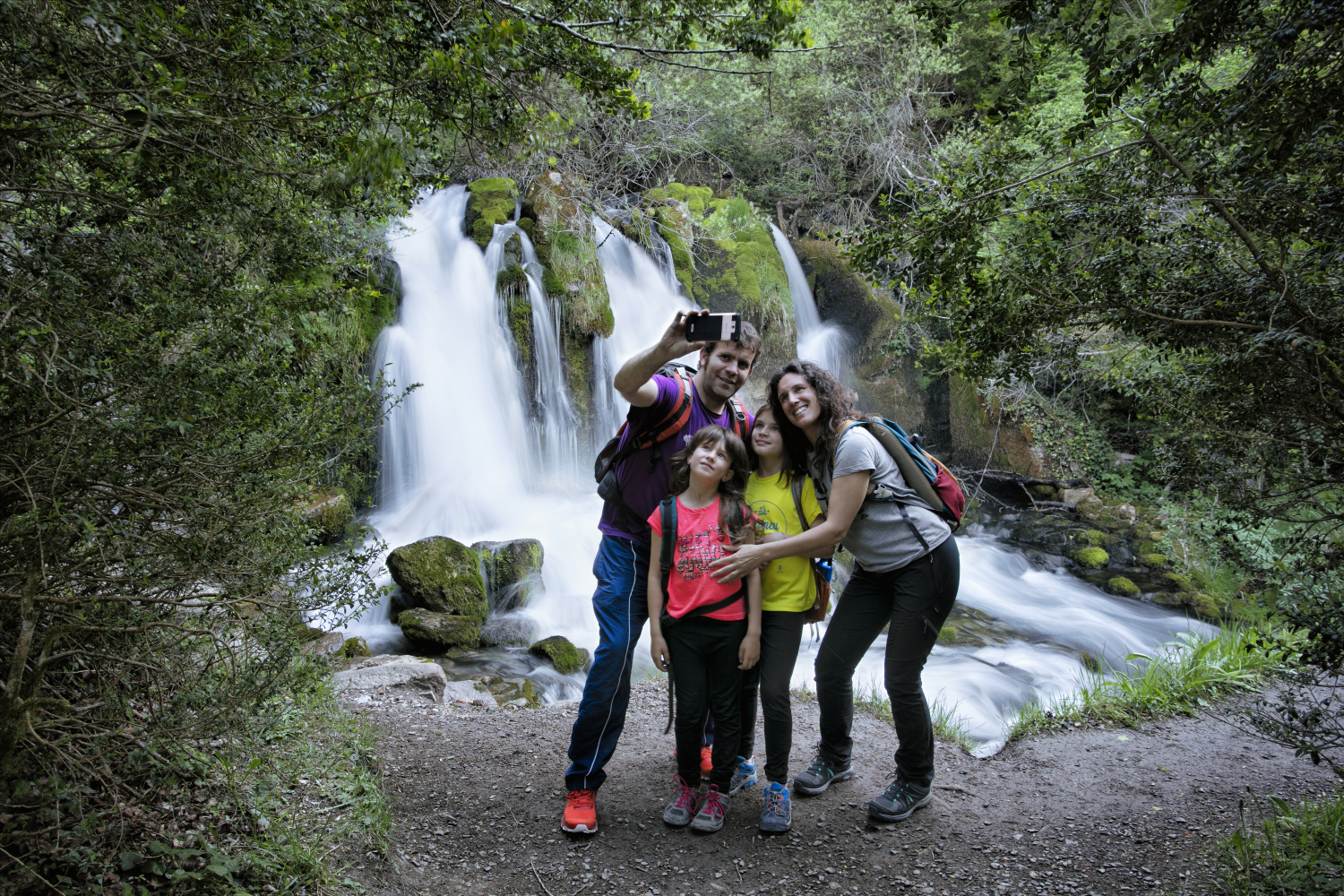
Aigües del Bastareny
The headwaters of the Bastareny valley belong to the municipality of Gisclareny, a municipality with a scattered population, currently the smallest population in Catalonia (26 people registered in 2018). This was not the case in the mid-nineteenth century when there were about 120 farmhouses spread over its territory, most of them in great poverty. Hikers in the early twentieth century agree to describe the village as a place where misery reigned, with subsistence agriculture in stony fields. However, they all talked about the beauty of the Bastareny valley and the houses there. This route does not reach its core, but it crosses this valley through the communication channels between the houses, passing through now abandoned farmhouses, - some documented already in medieval times -, in a setting of great scenic beauty within the Natural Park of the Cadi-Moixeró. In the final part you will discover one of the great attractions of this route as you enter the streams through the Salt de Murcurols and the Dou del Bastareny, the birth of this river.
Description
The route starts in front of the Font Nostra, in the neighborhood of the Hostalet, where there is Cal Cerdanyola, which now houses the Aula de Natura la Salle. Some time ago there was a mill - now in ruins - that used the waters of the Pendís river. Upstream where the Vents de Cadi Refuge is now, the structure of a 16th-century farmhouse, the Hostalet's house, can be seen with subsequent additions due to its use as a hostel on the Camí Ral de la Cerdanya.
Follow the track in the direction of the Dou del Bastareny - you can shorten it by the path on the right that saves the bend of the track where the parking area is. You will soon cross a bridge across the river, the Bastareny. Next to it are the ruins of the old flour mill of Forat or Puig, built at the end of the s. XVII or beginnings of the s. XVIII; not the first mill of the Bastareny, on the return you will see the remains of what was located a few meters from the birth. At the next bend you have to leave the track to go along the old road on the left that will take you directly to the first important farmhouse on this route, the house of Puig. Cited already in documents of the Middle Ages, the current building dates from the 18th century. It has the peculiarity of having a roof with four waters, of exemplary numbers in the Berguedà. Following the path on the left will take you to the small Romanesque church of Sant Martí del Puig. As you climb up, you will have views of Bagà. Look behind the church for a stone with a footprint that looks like a foot, it is called the Footprint of the Virgin.
Returning to the house of Puig, follow the track until the next junction of tracks, where you have to follow right along the forest track, which is climbing gently. When it starts to get flatter, keep an eye on it, since before reaching the Torrent de Prat de Rei the Camí dels Bons Homes (GR 107), which you follow from the beginning, go along the path on the left, but you must to continue along the track that gradually opens. One last turn and you will reach Murcurols, another of the great farmhouses in the valley. The house is documented since the Middle Ages, although the current structure is of modern age, but a set of additions are clearly visible. The northern face, dating to the medieval period (12th-13th centuries), could be part of a church. Already in documents of the s. XII also speaks of a castle in this place, in the ridge to the east there are some remains that could be part, but in any case it is totally devastated. This is an excellent place to enjoy the view, which extends from the Bauma pass to the west, Tancalaporta, the Moixa mountain range, the Moixeró, and the Cortalets pass below Tancalaporta, to the Vimboca hole opposite. and the Stones a little further east. On the opposite side of the mountain, there is an unmistakable depression of the terrain, wide above and narrow below. It is the Chamber of the Bocs where lambs were closed after mating so that they would not disturb the sheep and the young.
Once you have resumed the path, return to the crossroads and take the path to the left of the house to descend to the bottom of the valley. After a stony descent where you have to be careful not to slip, you cross the stream. If it is a wet season, you will hear the Salt de Murcurols, which you can access after passing the stream, by a path on the left a few meters. A nice jump, especially when the horsepower drops; notice how the pumice sedimented in times of drought has formed a waterslide. Continuing along the path, you must cross the Muga stream, which descends from the Moixeró range.
You will exit on a track that will have to follow to the right. Shortly afterwards, you will pass underneath the house of Monnell or Molnell, another of the large farms in the area that if you pay attention you will see on the way down. This one is documented from the s. XIV and for a time they dominated and exploded the headwaters of the Bastareny river. Continue on the main track and after crossing the waters of the Bastareny through the Monnell bridge, you can climb the well-marked path to the Dou del Bastareny. The leap is photographed on countless postcards.
At the exit of the stream, it seems that a flour mill had been later converted into a sawmill. In the early twentieth century, when it was a sawmill, logs were transported by cable car to Bagà.
Continue along the main track and later on you will find the access to the Bullidor de Sant Esteve on the left. If you want you can go down there, which leads to springs on the riverbed - more visible in times of little water. You have to be careful with the descent; there are quite high steps and with the humidity they slip easily. Continue on the signposted path, and on arriving at the path that you have already done, you will see a small booth on the right from where there is water noise. It is the source of the Violin, whose water is now brought to Bagà. And from here you know, cross the Bastareny, the ruins of the mill and a little climb to get back to Cal Cerdanyola, the end of the route.
Technical sheet
Route number: 68
Town: Gisclareny
Type: Easy
Distance: 8,5 Km
Time: 2,5 hores
maximum altitude: 1179 metres
height difference: 425 metres
To organise
Cartography: 46-Parc Natural del Cadí-Moixeró E. 1:25.000. Institut Cartogràfic i Geològic de Catalunya Moixeró - La Tosa 1:25.000. Ed. Alpina
More information
Bibliography: Les tres-centes cases de Gisclareny de Francesc Caballé. Els Molins hidràulics de la vall del Bastareny de Gener Aymamí. Inventari de Patrimoni: http://patrimonicultural.diba.cat
Documents and links
OFICINA DE TURISME DEL BERGUEDÀ
Carretera C16 Km 96
08600-Berga. Phone (+34) 654 125 696
Monday to Friday: 9 to 14h.
Saturday: 10 to 14 & 16 to 18h.
Sunday and holidays: 10 to 14h.
E-mail: turisme@elbergueda.cat
[Premsa]
Other

 English
English Follow us
Follow us







![[Tancar]](/plantilles/bergueda/img/tancar.png)














